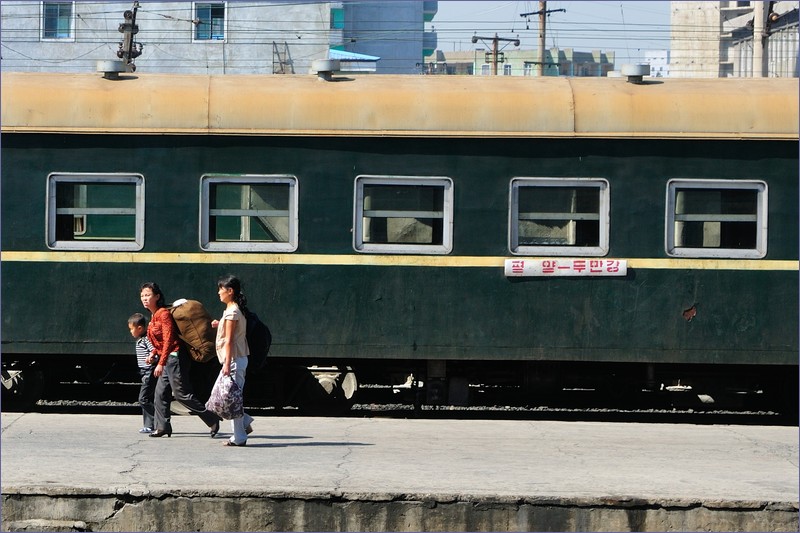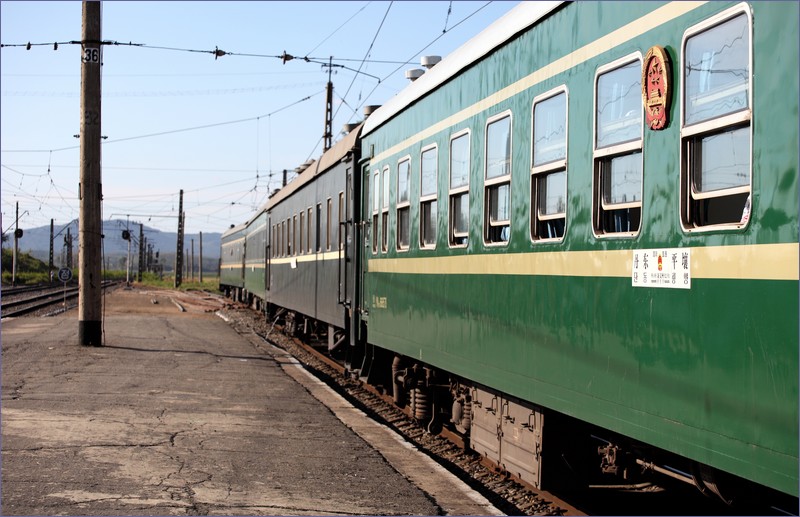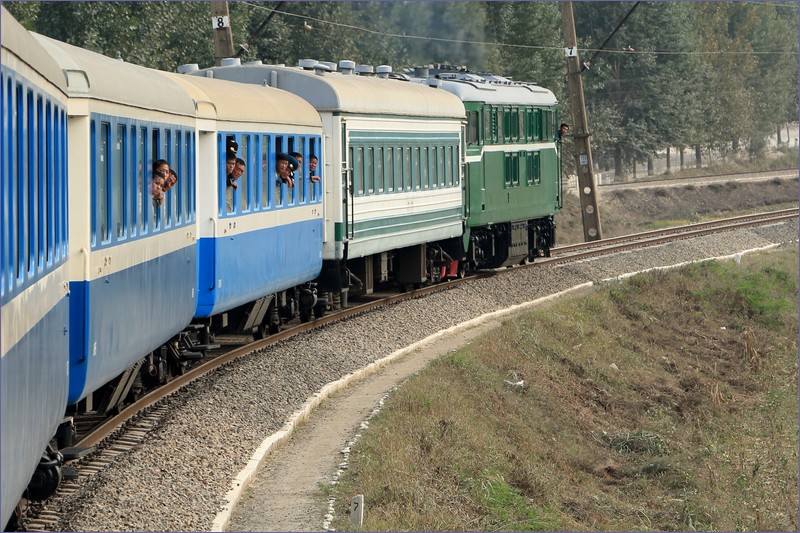North Korea has an extensive network of standard-gauge and narrow-gauge railways. Most of the tracks are neglected. Rolling stock is old. Foreigners are not allowed to travel in North Korean local trains. The main railway station and junction is Pyongyang railway station – originally built in the 1920s, destroyed during the war and rebuilt in 1957.
Last updated: 23.06.2025
Railway in North Korea is one of the most important branch of economy. Transportation in North Korea mainly depends on railways – especially freight transport. The total length of railway lines in North Korea is about 5,300 kilometers. There are more than 700 train stations in North Korea. Many train stations in North Korea were named after memorable events, persons or dates.
The railway network is split into five regional divisions – the western line, the eastern line, the northern line and the east-west connection line. It has 10 major railways and 90 branch lines. The most important railway lines are Pyongyang – Sinuiju (Pyongui line), Pyongyang – Gaeseong (Pyongbu line), Pyongyang – Gowon (Gangwon line) and Wonsan Gamho (Youth line). The longest railway line connects Pyongyang and the far north-eastern city of Rajin.
There are problems with electricity shortage and neglected tracks – some of the trains run with an average speed between 15 to 30 kilometers per hour. Old trains have no air-conditioning (only fans). 80 percent of the lines are electrified. Almost all lines are single track. Passenger trains must stop frequently to give way to trains moving in the opposite direction.
Trains are divided into five categories: commuter, slow, local express, express and special. Special trains are used by political leaders and when these trains are in operation, all trains must to stop. Trains are operated by North Korea State Railways.

Train Travel in North Korea – tourist trains
There are special tourist trains for foreigners who want to visit North Korea. These trains are comprised of 70’s sleeping cars bought from Switzerland. Trains are chartered by licensed tourist agencies and tourists are accompanied with licensed guides. Most popular is one week trip around North Korea – journey starts and end in Pyongyang. The whole journey was described in detail in a book “Around the World in 80 Trains” by Monisha Rajesh.
The trip looks similar to study trips for journalists and influencers. Everything is scheduled, you only see what the organizers want to show you, except for views from the train.

Train travel in North Korea – international trains
There were international trains from North Korea to China and Russia. All international services were ceased due to COViD-19 pandemic, current status is unknown – probably these trains were not reinstated.
Train Pyongyang – Beijing ran four times a week. Two trains had North Korean carriages, two Chinese carriages, among others restaurant car. Train was used by tourist as an option for exit from the country. Train stopped at border city Sinuiju.
There are three railway links between North Korea and China:
Dandong – Sinuiju
Jian – Nampo
Tumen – Namyang
All links use bridges, most important is bridge between Dandong and Sinuiju.
Train Pyongyang – Moscow was reinstated on 19 June 2025 after five years of hiatus due to COVID-19 pandemic. Currently, the train runs twice a month and cover a distance over 10,000 km. The train is comprised of North Korean carriages and stops in major Russian cities. The whole journey lasts more than eight days. This train likely is not available for foreign tourists on the North Korean territory.
Train Pyongyang – Khabarovsk was inaugurated the same day as the reinstated train to Moscow. Train to Khabarowsk runs only once a month.
In December 2024 trains between stations Hasan and Tumen were resumed.
The recently rebuild line from Hasan in Russia to North Korean harbour in Rason (54 km) can be use by Russian wide gauges and the Korean standard gauge. The railway line is used for freight transport.
There were plans to rebuild cross-border railway line and reinstate passenger trains between North Korea and South Korea but the plans were abandoned due to political tensions.
See also:
